Key takeaways
- Musician portfolios combine recordings, photos, and personal insights to emotionally engage with fans and showcase an artist’s journey.
- Active fan engagement fosters loyalty and transforms passive listeners into a supportive community, enhancing the overall experience.
- Social media platforms serve distinct purposes, where Instagram is best for visual storytelling, Twitter for real-time interaction, and Facebook for community building.
- Sharing authentic content and personal stories strengthens connections with fans, making them feel valued and understood.
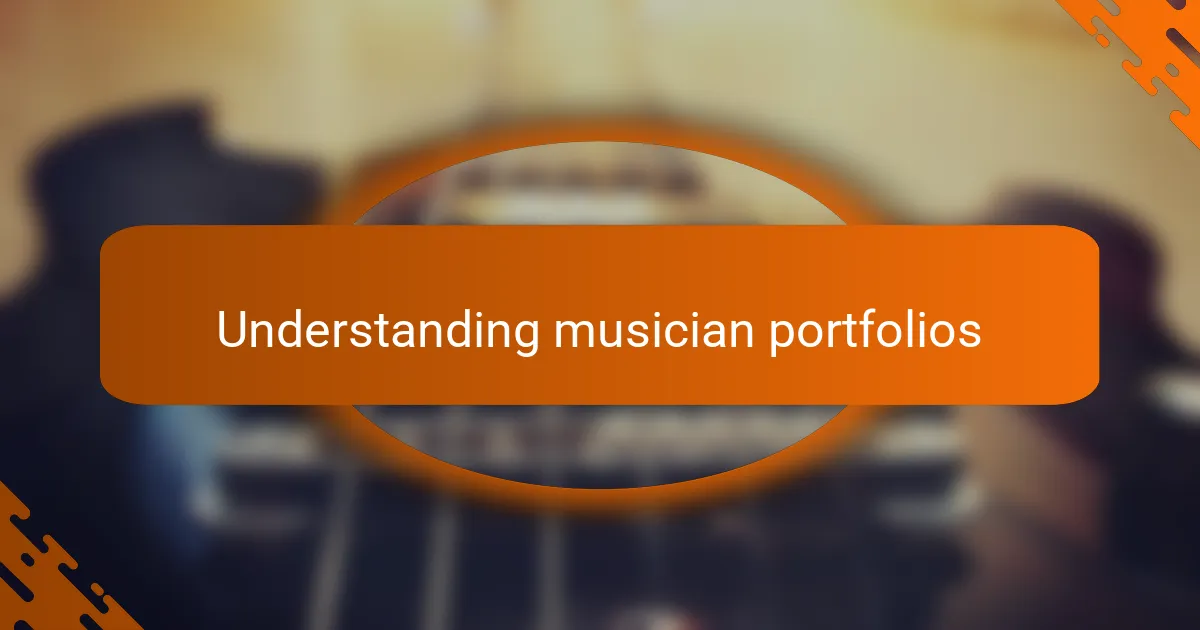
Understanding musician portfolios
Musician portfolios are essential for showcasing an artist’s journey, style, and achievements. I remember the first time I crafted my own portfolio; it felt like piecing together a scrapbook of my musical life. As I included recordings, photos, and lyrics, I realized how each element told a unique story that resonated with my fans.
A well-structured portfolio not only highlights your talent but also connects you emotionally with your audience. When I share personal insights about my creative process or challenges I’ve faced, it deepens the connection with my listeners, making them feel like a part of my musical journey.
To help you understand the key components of a musician portfolio, here’s a brief comparison of traditional portfolios versus digital ones.
| Aspect | Traditional Portfolio | Digital Portfolio |
|---|---|---|
| Accessibility | Limited to physical copies | Available worldwide anytime |
| Interactivity | Static, no engagement | Dynamic, allows sharing and interaction |
| Content Updates | Time-consuming to update | Easy and instant updates |
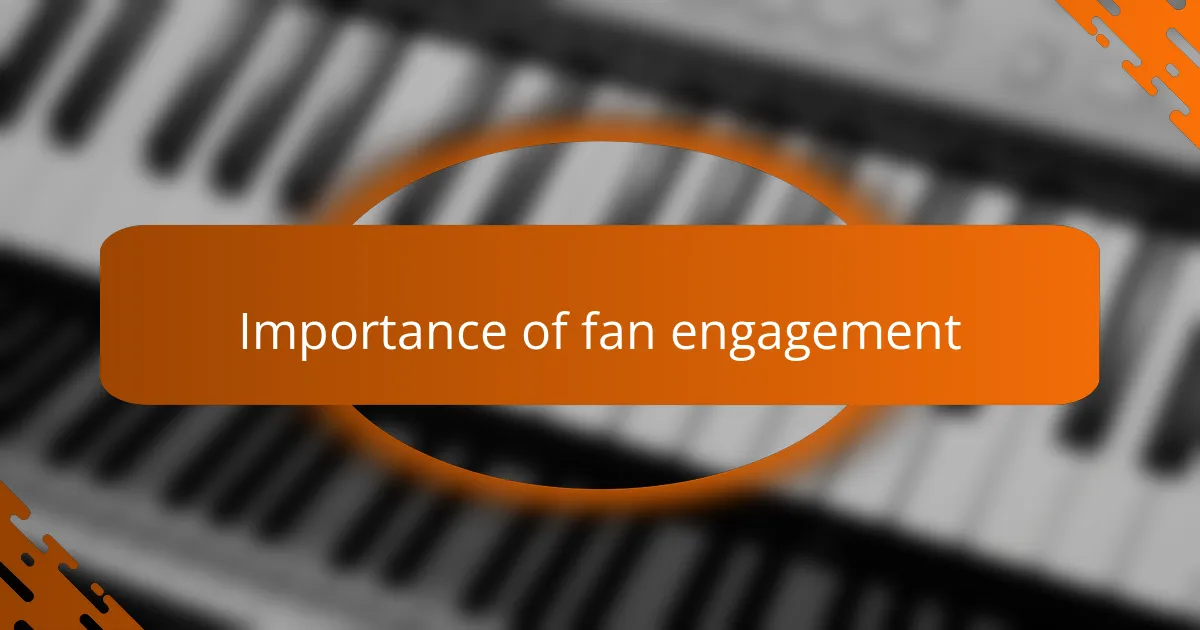
Importance of fan engagement
Engaging with fans goes beyond just sharing music; it’s about creating a community. When I started responding to comments on my posts, I noticed fans felt more valued and connected. It’s fascinating to see how a simple acknowledgment can transform their experience from passive listening to active participation.
Fan engagement is crucial because it fosters loyalty and trust. I remember a time when I shared a behind-the-scenes glimpse of my life, and the response was overwhelming. Fans don’t just want the final product; they want to feel like they’re part of the behind-the-scenes story, participating in the journey alongside me.
Additionally, understanding fan feedback can be a game changer for any musician. I often get inspired by their suggestions or hear what resonates with them emotionally. Their insights help shape my music and create a deeper connection—one that’s built on mutual respect and shared passion.
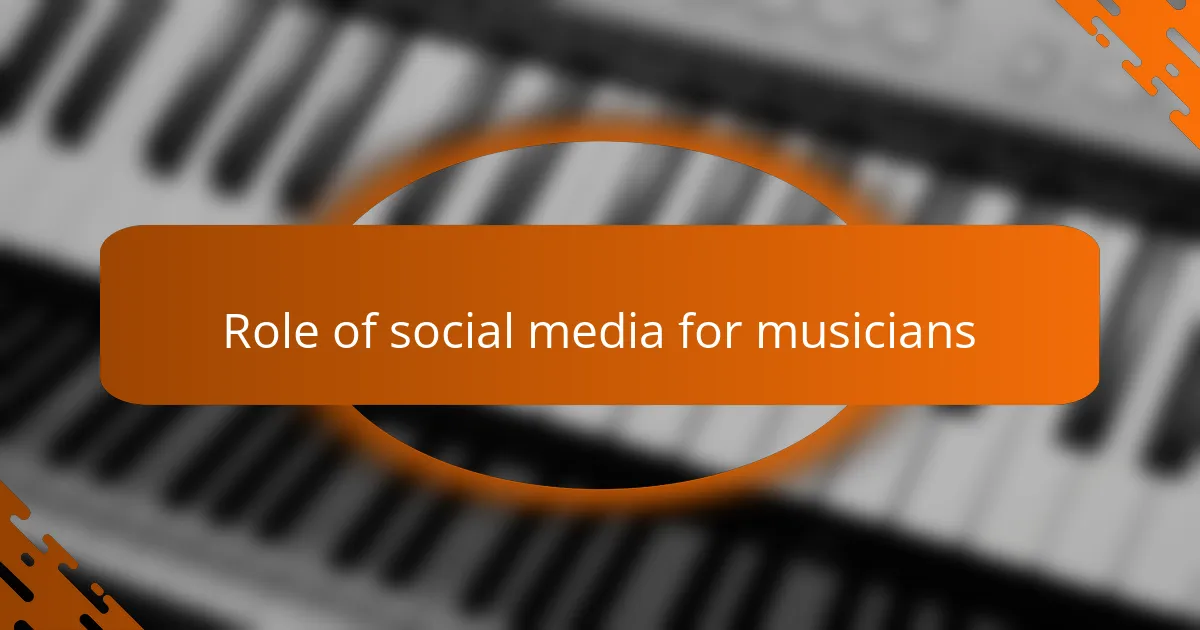
Role of social media for musicians
Social media serves as a powerful tool for musicians, allowing us to share our stories in real-time. I remember the thrill of posting snippets of a song I was working on and watching as fans engaged with their thoughts and excitement. This immediate feedback is incredibly empowering; it reminds me that my music resonates with people, sparking conversations that I find deeply enriching.
Through platforms like Instagram and Twitter, I’ve been able to create a personal brand that reflects not just my music but who I am as a person. I often share moments from my daily life, such as rehearsals or songwriting sessions, allowing fans to feel like they’re getting a backstage pass. It’s remarkable how this sense of intimacy transforms a distant listener into a loyal supporter, invested in my journey.
Moreover, I’ve noticed that social media also helps amplify my reach. When fans share my music or posts, it creates a ripple effect, introducing my work to new audiences. Have you ever experienced that feeling of connection when someone you don’t know appreciates your art? It’s exhilarating and only fuels my passion to create music that speaks to even more people.
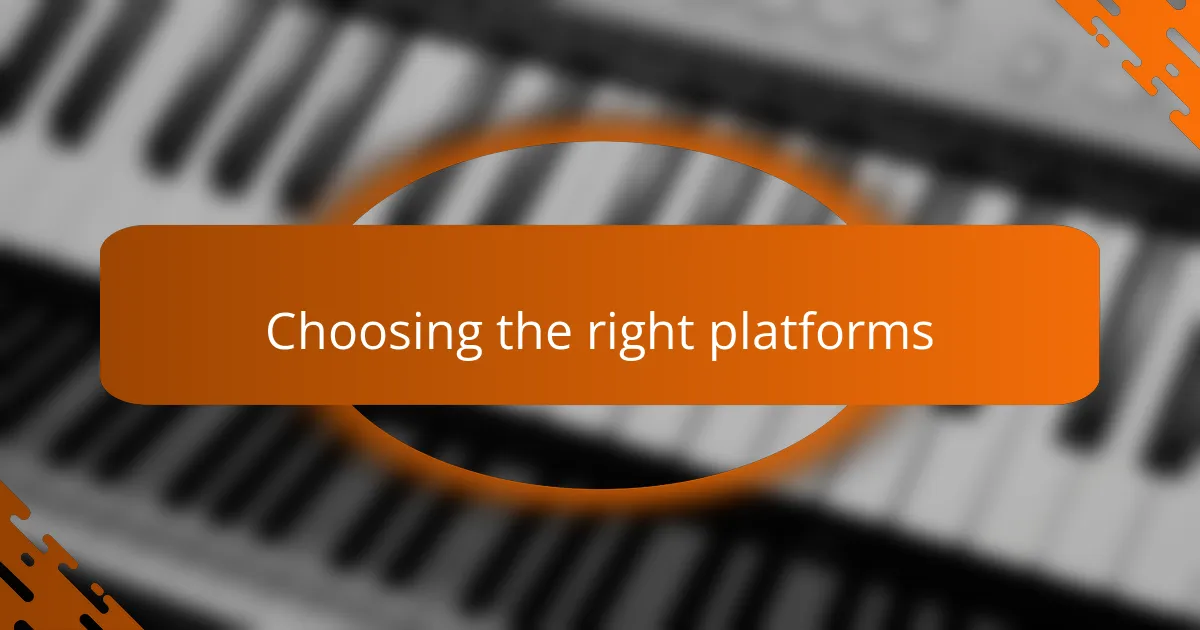
Choosing the right platforms
When I embarked on my journey to connect with fans through social media, choosing the right platforms was crucial. Each platform has its unique vibe and audience, which shaped how I interacted with listeners. For instance, I found Instagram to be perfect for sharing behind-the-scenes glimpses of my life and creative process, while Twitter allowed me to engage in real-time conversations with fans.
Facebook, on the other hand, became a great space for longer posts and community building, where I could share personal stories and updates. By experimenting with these platforms, I discovered which ones resonated most with my audience, fostering deeper connections and enhancing my music’s visibility.
| Platform | Strengths |
|---|---|
| Visual storytelling, behind-the-scenes content, high engagement | |
| Real-time interaction, quick updates, and direct fan conversations | |
| Community building, longer posts, event promotion |
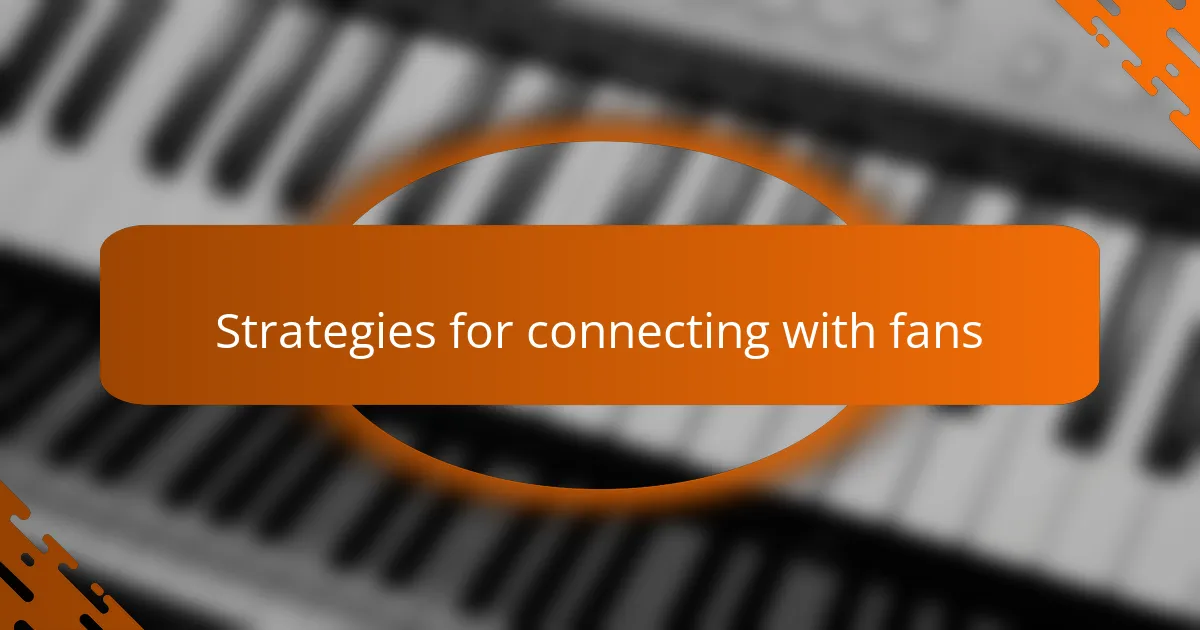
Strategies for connecting with fans
One effective strategy I’ve found for connecting with fans is to share personal stories behind my music. Each song often has a unique story that resonates with listeners. By opening up about my experiences and inspirations, I’ve noticed fans become more invested in my journey, feeling as if they’re part of it.
Additionally, I actively engage with fans through live Q&A sessions on platforms like Instagram and Facebook. It’s incredible how much deeper the connection becomes when fans can ask questions directly and I can respond in real-time. This dynamic interaction transforms the relationship from mere admiration to a vibrant community.
Here are some strategies that have worked for me:
- Share behind-the-scenes content about the creative process.
- Host live chats to answer fan questions and share thoughts.
- Use personal anecdotes in posts to create relatable content.
- Conduct polls to ask for fan opinions on upcoming projects or songs.
- Encourage fan art and feature it on my social media pages.
- Respond to comments to foster a genuine dialogue.
- Collaborate with fans on ideas, allowing them to be part of the creative journey.
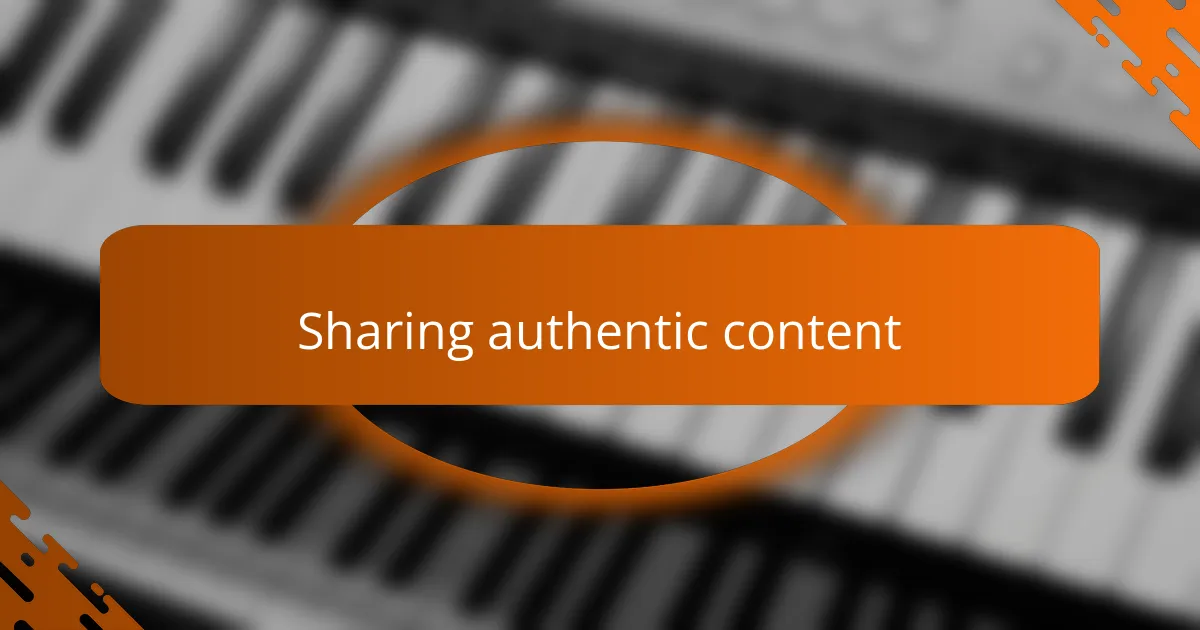
Sharing authentic content
Sharing authentic content has always been at the heart of my social media strategy. When I post a photo that captures a candid moment from my life, it’s not just about marketing my music—it’s about sharing a piece of who I am. I remember posting a video of me struggling with a song lyric; the response was heartwarming. Fans appreciated the honesty and reached out to share their own struggles, creating a bond that goes beyond just music.
I’ve realized that the more genuine and transparent I am, the more my fans respond. For instance, when I recently shared a story about a difficult performance, I was surprised by the wave of support and encouragement I received. It was like we entered into a dialogue, where everyone felt comfortable sharing their insecurities. Isn’t it fascinating how vulnerability can spark such connection?
This authenticity doesn’t have to be grand either. Sometimes a simple thought about my day—like an unexpected moment of inspiration—can resonate deeply. I’ve learned that it’s in these small, everyday share moments that fans truly connect with me as a person, not just as an artist. It reminds me that we all share similar experiences, adding layers to our relationship that a polished image never could.